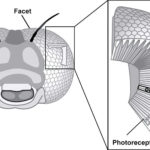Yellow flies are notorious biting pests, particularly prevalent during warmer months. If you’re living in an area plagued by these aggressive insects, you’re likely seeking effective ways to manage and eliminate them. This guide provides comprehensive strategies on How To Get Rid Of Yellow Flies and protect yourself from their painful bites.
Understanding Yellow Flies
Yellow flies, scientifically known as Diachlorus ferrugatus, are a type of biting fly common in regions like Florida. It’s crucial to understand their characteristics and behavior to effectively combat them. These insects are often mistaken for deer flies, but knowing the distinctions can aid in targeted control measures.
Identifying Yellow Flies
Adult yellow flies typically measure about 1 to 1.2 cm in length and exhibit a predominantly yellowish coloration. Key features that help identify them include:
- Legs: Their front pair of legs are black, while the other pairs are yellowish-gray.
- Wings: Yellow flies possess clear wings with a black stigma and brown or tan patches near the wing apex. This wing pattern differentiates them from deer flies, which have brown patches across the middle of their wings.
- Abdomen: They have a distinctive black-striped, yellow furry abdomen and brilliant blue-green eyes. Some species might have black hair lining the sides of the yellow abdomen and a broad yellow stripe down the middle.
A detailed view of a yellow fly, emphasizing its physical characteristics for easy identification.
Yellow Fly Behavior and Habits
Female yellow flies are the aggressive biters, needing blood meals for egg production, while males primarily feed on pollen and nectar. Understanding their behavior is key to effective removal:
- Biting Behavior: Female yellow flies are persistent and attack vigorously, causing painful bites that often result in large, itchy swellings. These bites can become infected if not cleaned and treated properly.
- Activity Time: While they can bite throughout the day, yellow flies are most active during the late afternoon and on cloudy days. They are prevalent in hot summer and early fall but can be found from April through November.
- Habitat: Yellow flies thrive in areas near fresh water sources like ponds and pools, as well as wooded and shady locations. They are less likely to enter homes but are common around yards with standing water.
Why Yellow Fly Bites Hurt
Unlike mosquitoes, yellow flies don’t inject an anesthetic when they bite, which explains the immediate and sharp pain. They use serrated mouthparts to puncture the skin, creating a cut before feeding on blood. This mechanical action of cutting into the skin is a primary reason for the painful sensation associated with their bites.
A young boy examines a yellow fly bite on his arm, illustrating the common reaction to these insect bites.
How to Get Rid of Yellow Flies: Control Methods
Controlling yellow flies requires a multi-faceted approach. Here are several effective methods to reduce their populations and minimize their impact on your property:
Trapping Yellow Flies
One effective method for reducing yellow fly populations in your yard is trapping. Yellow flies are attracted to dark shapes and movement, making sticky ball traps a useful tool.
- Sticky Ball Traps: Hang inflatable black balls coated with a sticky adhesive in your yard. The movement and dark color attract yellow flies, which then get stuck to the ball. This method can capture a significant number of flies within a few days.
A sticky ball trap effectively capturing yellow flies, demonstrating a practical method for population control.
Chemical Control (Insecticides)
Insecticides can offer temporary relief from yellow flies, particularly in heavily infested areas. However, it’s important to use them judiciously and consider their limitations:
- Effective Insecticides: Chemicals like Permethrin, Carbaryl, and Malathion have been found effective against yellow flies. These can be purchased at farm supply or hardware stores.
- Application: Spray insecticides in areas where yellow flies are prevalent. However, remember that this provides only short-term relief as new flies can quickly move in from surrounding areas. Yellow flies are strong fliers and can travel miles from breeding sites.
- Environmental Considerations: Avoid using insecticides near water bodies or wetlands, as these areas are often breeding grounds for yellow flies and habitats for other beneficial aquatic life that could be harmed by chemicals.
Vegetation Management
Modifying your landscape can make your property less attractive to yellow flies:
- Increase Sunlight: Yellow flies prefer shady areas. Removing shrubs and small trees around your house increases sunlight exposure, making the environment less favorable for them. Open, sunny areas are naturally less appealing to yellow flies.
Preventing Yellow Flies
Long-term control involves preventative measures to make your property less hospitable to yellow flies:
- Eliminate Standing Water: Reduce or eliminate standing water in your yard. This includes emptying containers, cleaning gutters, and ensuring proper drainage to remove breeding sites.
- Habitat Modification: Combine vegetation management with water source reduction for a comprehensive preventative strategy.
Conclusion
Getting rid of yellow flies requires a combination of control and prevention strategies. By understanding their behavior, using traps, managing vegetation, and judiciously applying insecticides, you can significantly reduce their numbers and enjoy your outdoor spaces more comfortably. Remember that consistent efforts and integrated methods are key to long-term yellow fly management.

